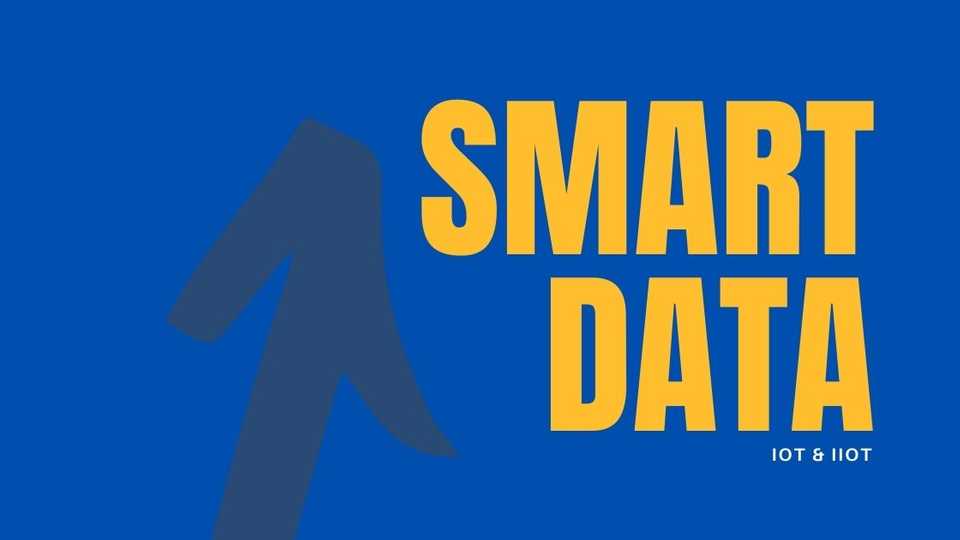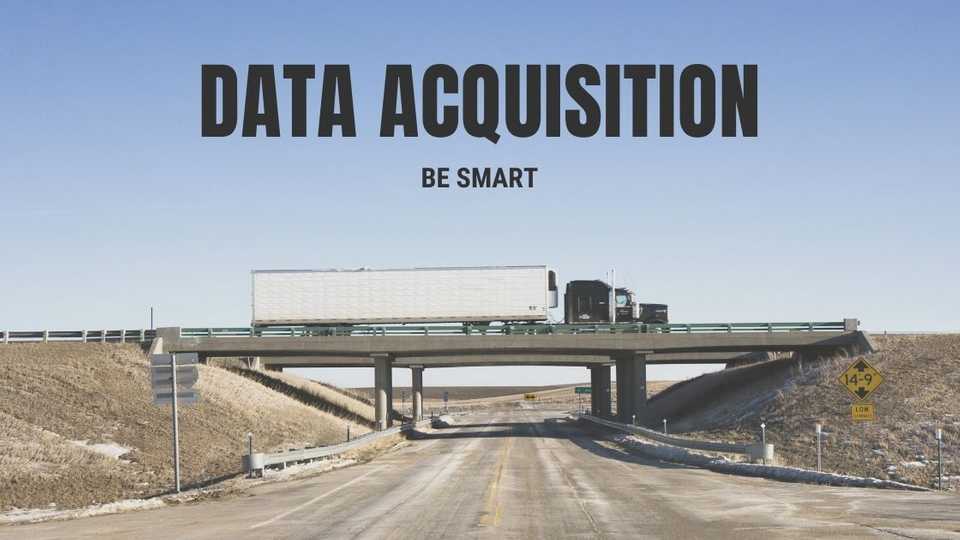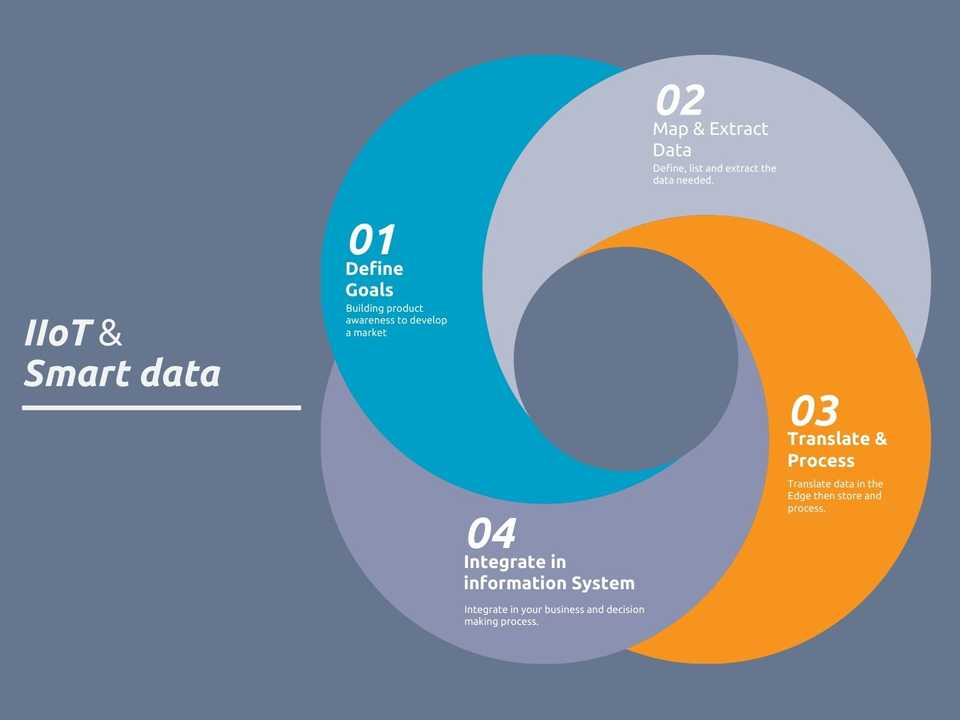IIoT is about smart data
I am quite sure you already have heard about IoT during the past years. In this post, I will not discuss about IoT for public. My focus is on IoT for industry in the industry 4.0 era called IIoT for Industrial Internet Of Things. IoT is a new concept for the industry sector. My definition of IIoT could be:
Extract more and more smart data from your industry send it to a suitable storage and do something with it to improve your decision making.
I will present you what is IIoT with the smart data concept and what you should do with it.
Define the goal of your IIoT project
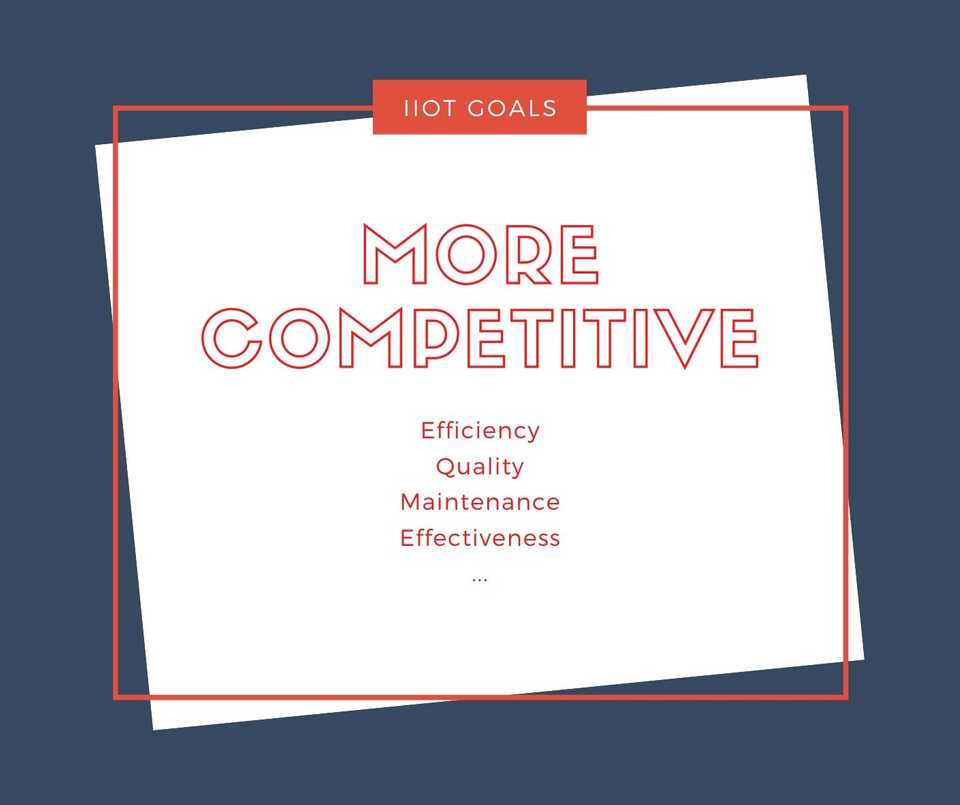 Before diving in the technical stuff, you need to define the goal of your project. If you are in industry sector, you don’t want to do an IIoT project just because everyone is doing it or it is a trend. You will invest in this kind of project just if you have a problematic to solve and that is strategic for your company. Usually, IIoT is all about competitivity through efficiency and effectiveness.
Before diving in the technical stuff, you need to define the goal of your project. If you are in industry sector, you don’t want to do an IIoT project just because everyone is doing it or it is a trend. You will invest in this kind of project just if you have a problematic to solve and that is strategic for your company. Usually, IIoT is all about competitivity through efficiency and effectiveness.
Depending of your needs and your organisation you have to define your goal(s) with your project. It could be to display KPIs (Key Performance Indicator) on a real-time dashboard (Like OEE - Overall Equipment Effectiveness, a standard more measuring manufacturing productivity) to help your field agents to be more efficient, simply be able to send an alarm to the operator smartphone, send smart data to ERP, CRM, MES, SCADA, Business Intelligence, …
Here is some known IIoT projects:
- Get KPIs and OEE in real time to point the weaknesses in your production process in a very early stage.
- Send production data to ERP and CRM to make better decisions and have a better communication with sales and production.
- Create an automated machine learning model to prevent machine failure and organize maintenance
- Become more flexible on your production lines.
- Be energy efficient on your production line
- …
Your imagination is the limit. You need to define KPIs to know when you have successfully reach your goal.
Let’s now see how you can work with your data to achieve your newly defined goal.
Data acquisition, gateway and cloud
Nowadays, you can get all the data you need from machines you want in almost every way you can imagine. You can use Digital or Analog DAQ (Data Acquisition), Ethernet DAQ module, Smart sensor, Wireless DAQ, IoT gateways, … to extract the data. In fact, there is a big chance that the data you are looking for is already extracted from machine, sensor or PLC. Because data acquisition in industry is a reality for a long time, way before the IoT concept. So you will always find a way to get the data.
Once you know how to get the data to the Edge (computing done near the data source) or OT network (Operational Technology network) you need to send it to a convenient storage. If you have the appropriate budget, send it to a smart storage it is even better, but not mandatory.
One important point, in order to have a successful IoT project, is the communication between OT Team and IT team. Usually, they use a different vocabulary and sometimes it could be quite hard to have a fluent communication between them. Without this point, you will have a lot of pain to extract securely the data from one network to the other.
You also have another solution to extract data from your OT network: Mobile gateway which use some wireless technology like 3G/4G, LTE-M/NB-IoT, 5G, LoRaWan/Sigfox, … With this kind of platform, you just send the data wherever you want.
After that, you need to store the data. Choose carefully the solution depending of your needs:
- Public and Hybrid cloud is a solution for large collection of data, or sometimes it is convenient if you have data from many different locations
- Private cloud or PaaS/SaaS platform if you want to use a specific solution/application
- A simple local or hosted server if you do not have a big amount of data or depending of your future usage.
I just present 3 solutions, but you can mix them as much as you want.
Now let us dive in the intersting and hard part of IoT: Extract smart data.
Get smart & important data
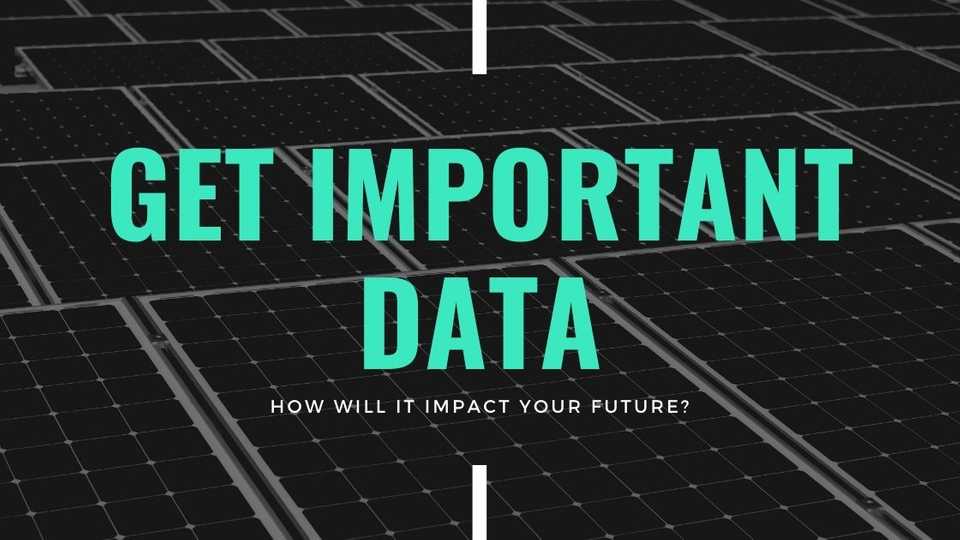 What is smart data ? it is not the opposite of dumb data. It is more the idea of getting only relevant data that you need, not raw data that needs to be processed before being useful.
What is smart data ? it is not the opposite of dumb data. It is more the idea of getting only relevant data that you need, not raw data that needs to be processed before being useful.
So now why you just want smart data ? for saving money.
Every bit transferred and stored cost money. It is even more true with the cloud.
Remember that extract, translate, send, store and analyze the data cost money. And more data you have more money you need. So I strongly recommend to make a list/map of the data you need before starting the project. Then you can be even more cost effective if you translate and clean your data early. Sometimes invest in a rugged computer or IoT gateway with some logic capabilities is more interesting than sending raw data to your storage.
Because cloud CPU time and Data transfer is expensive, you want to send the smartest data possible, not more, not less. You want to lighten as much as possible your data payloads before sending them to any storage service.
The lighten process depends on your needs and of the devices you extract the data from. As an example if you use a Wireless DAQ module to extract average temperature from a sensor you could also find in the payload some data like:
- Status of the wireless
- Wireless quality
- last reboot data of your device
- …
In this use case, you just need the unique identifiant of your sensor, the average temperature and the full timestamp (date & time) of the data.
To manage this part, you might need to get Smart data acquisition modules for the field part, smart IoT gateways for the OT part, Distributing Edge computing, Device-to-cloud DAQ or even your own tailor made solution. Theoretically, you can work on your data wherever you want as long as it is done before your storage service. When you get informations from a sensor or PLC, it is pure raw data, you need to translate it to human readable data. And as I said, the earlier you translate the data to the needed format, the better it is. Depending of your OT architecture and the level of connectivity of your equipment, the Edge computing could be a great solution. And it is not just about being cost effective. If you have an ecology policy and want to be energy effective, based of your amount of data, you have to consider every solutions.
Now that you have the data you need. You can start working on it. In the core of your project: Do something automated and smart with your data to achieve your goal.
Do something with your data
IIoT is not only about technologies. It is about transforming your data in decisions. Technologies just serve reaching your goal.
Once you have collected your smart data your projec is really starting. And that’s the tricky part. You have smart data but it is still raw data. They don’t make any sense. You have to create one or many processes to give sense to your data for reaching your goal. Usually you will need to mix data flow from your information system and your production data to extract what you need.
And for this step, you have many actors on the market. Some are well known from the industry market like Advantech, Nexcom, Schneider, Bosch, Siemens, ABB and some are new like Google, Azure, Amazon, Alibaba and many other small to middle size company. They are all working on offering smart solutions to make your life easier. Some of them are offering very specialized application for specific business. Others are providing generic solutions and framework to analyse globally. You can even mix some of them.
Depending of your goal, you will find those solutions useful, or not. If not you will have to find a partner to help you build your solution.
